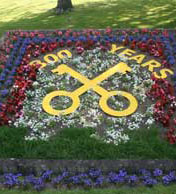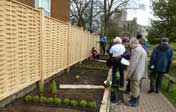The marvelously-maintained Priory Gardens, which have won Green Flags awards in recognition, are free to enter and accessible at all times and are managed by Dunstable Town Council. They are situated between the Priory House Heritage Centre and the Priory Church of St Peter.
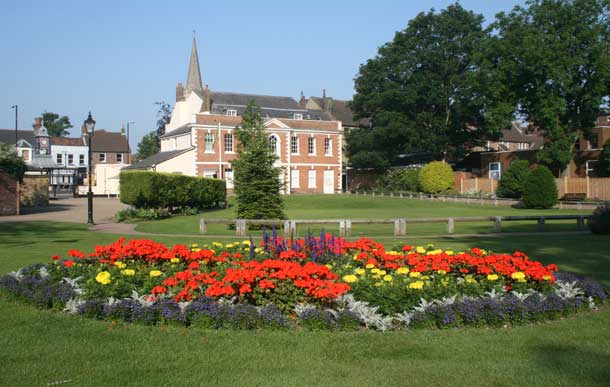
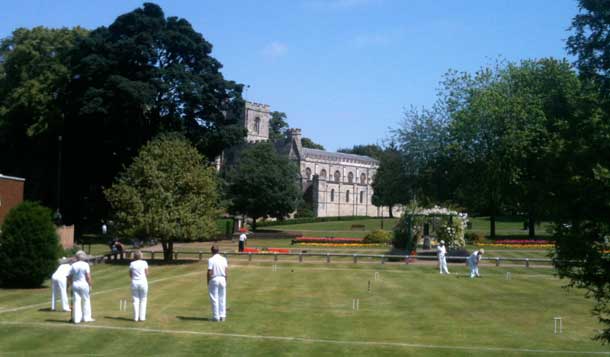
FORMAL GARDENS
The formal gardens, to the rear of Priory House, include a croquet lawn surrounded by magnificent floral displays and the Medieval Physic garden.
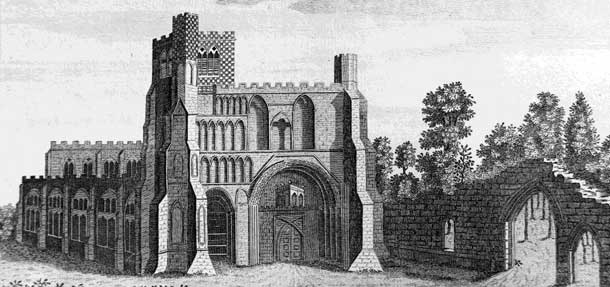
The church from the southwest by John Storer in 1808
PRIORY GATEWAY
In 2015, with the gateway, a scheduled monument, in danger of collapse, Dunstable Town Council commissioned a complete renovation with support from Central Bedfordshire Council and a major contribution from Historic England. This involved removing all the cement used in the previous repairs, repairing and replacing the damaged and missing stones. All the stonework was rebuilt and pointed using lime mortar that closely matched the colour of the original.
Finally, the Friends assisted in procuring and funding new gates of solid oak which were installed in 2016, with additional funding by various local organisations.
To downlad a pdf of the interpetation panels click the following links:
Panel 1
Panel 2

TEAROOM TERRACE
In front of the lawn is the tearoom terrace which, when weather permits, allows visitors to enjoy refreshments outside whilst taking in the wonderful views.

WAR MEMORIAL
At the rear of the formal area is the War Memorial which was provided by public subscription and unveiled in 1952. Iit commemorates the men and women of Dunstable who died as a result of the two World Wars. Nearby is the Scouting Commemorative Stone which celebrates both the Golden Jubilee and the Centenary of the scouting movement. It also shows the direction of Brownsea Island, where the first scout camp was held in 1907.
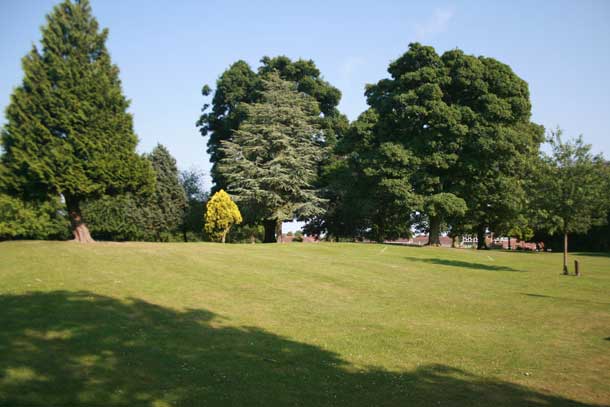
Behind this, and around the Church, is the site of the Augustinian Priory now an area of graceful parkland containing an array of magnificent trees. The Manshead Archaeological Society have undertaken geophysical surveys to determine the layout of the Priory. This has been marked out on the grass and an audio guide is available to navigate visitors around the site.
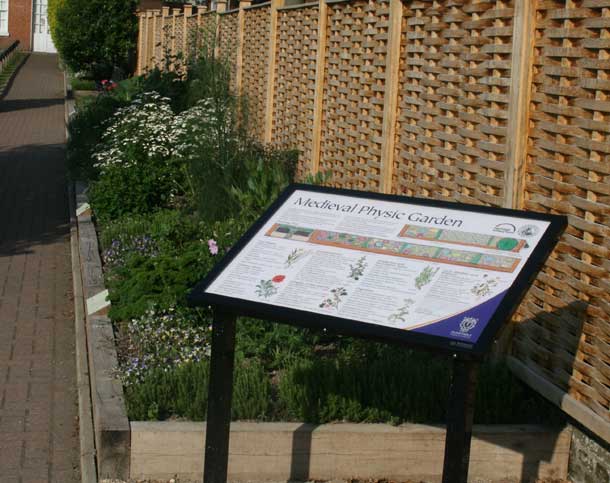
PHYSIC GARDEN
As part of the Medieval Dunstable project it was decided to create a Medieval Physic Garden with herbal and medicinal plants in raised beds such as those that might have been tended by the Augustinian canons of Dunstable Priory.
Monastic gardens enabled religious establishments to be self-sufficient by providing food for the monks and for the local community. Many monasteries also developed physic gardens for the production of herbal remedies to treat a range of illnesses. Additionally, herbs were used for flavouring and dye plants were grown for colouring garments.
The beds are laid out following groups: Bed 1 Dye Plants; Bed 2 FLowery Mead; Bed 3 Scented Herber; Bed 4 Coughs & Colds; Bed 5 Headaches & Restorative Tonics; Bed 6 Digestion; Bed 7 Liver, Bladder & Kidneys
The interwoven oak fencing at the rear of the beds present a nice rustic backdrop.
